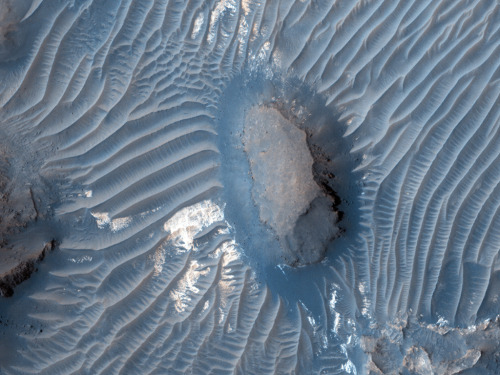
The photo above depicts a region of Mars as seen by HiRISE, a camera located on board the Mars Reconnaissance Orbiter. Prominent in the picture is a vast dune field which is formed through mechanics known as Aeolian Processes. Basically, a fancy word for the effects of the wind on the surface of a planet.
The neat thing about dunes on Mars is that their movements (yes, sand dunes can move) and their shapes are the same as dunes here on Earth… And these are also the same as dunes found on Titan. This commonality is of particular importance in the field of planetary science since dune models developed for Earth have been crucial in uncovering Mars’ geological history, present and future.
The science behind dunes was first explored in the 1940s by British soldier Ralph A. Bagnold who was stationed in Africa. After becoming entranced with the sand dunes found in Africa he returned home and began a series of experiments aimed at revealing the nature of sand dunes. In short: he succeeded in describing dunes so well that his book “The physics of blown sand and desert dunes” remains the defacto standard for scientists who explore Mars.
Science. FTW.